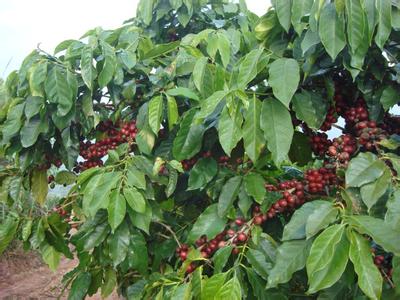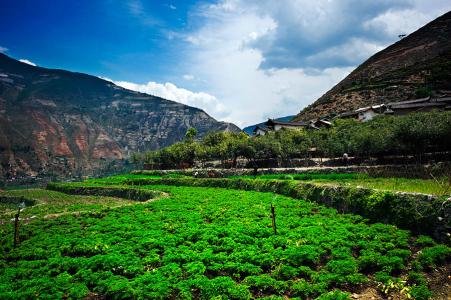Brazil is the most advanced country in the world and most dependent on industrialized coffee production
Coffee industry is on the rise again
From the 1880s to the 1930s, the coffee industry rose again, and the name of this period was also named after the two important agricultural products at that time. This period is known as the "caf é com leite" period because of the significant influence of coffee kings from Sao Paolo and dairy producers in the state of Minas Gerais. During this period, the Brazilian government began to implement price stabilization measures in order to protect and stabilize coffee prices. When market demand is low, the government will buy coffee from producers at a higher price and store coffee beans until the market price rises. For coffee tycoons, this means that coffee prices will remain stable and avoid falling coffee prices as a result of oversupply.
By the 1920s, Brazil had produced 80% of the world's coffee beans, and the coffee industry had helped the country build a lot of infrastructure. Such increased production eventually led to overproduction of coffee and exacerbated the damage done to Brazil during the Great Depression in the 1930s. The Brazilian government then had to burn 78 million bags of coffee, hoping to get coffee prices back to normal, but the effect was not obvious.
During World War II, the United States began to worry that falling coffee prices might prompt Central and South American countries to lean towards Nazis or Communists as European markets closed. In order to stabilize the price of coffee, countries agreed to adopt a coffee quota system and then signed an agreement. Such an agreement led to a rise in the price of coffee until it was stable in the 1950s. This further led to the International Coffee Agreement (Internaional Coffee Agreement,ICA) signed by 42 producing countries in 1962. The quota is determined according to the guiding price of coffee established by the International Coffee Organization (International Coffee Organization,ICO). If prices fall, quotas will fall; if they go up, quotas will increase.
The commercial scale of coffee cultivation began in the Paraiba River near Rio de Janeiro. Here is very suitable for growing coffee, on the one hand, the geographical environment is ideal, on the other hand, because of its proximity to Rio de Janeiro, it is conducive to export. Unlike other small coffee farms in Central America, the original commercial coffee farms in Brazil were very large, with slave labor as the labor force. This form of industrial production is very rare in other countries and can be said to belong exclusively to Brazilian coffee production. This approach is extremely aggressive: the most powerful and persuasive may win property rights disputes with unclear boundaries. Each slave also had to take care of 4, 000 coffee trees. Once the soil is too depleted, the whole farm is moved to a new area to be replanted.
Coffee production began to flourish between 1820 and 1830, and production exceeded the needs of Brazil's domestic market and was able to supply foreign markets. The businessmen who control coffee production have become so rich and powerful that they are called "coffee lords" (coffee barons). Any of their needs will have a significant impact on government policy and its support for the coffee industry.
By 1830, Brazil produced 30% of the world's coffee, rising to 40% in 1840. Such a sharp rise has also led to a decline in global coffee prices. Until the mid-19th century, Brazil's coffee industry relied on slaves. More than 1.5 million slaves were brought to Brazil to work in coffee plantations. After the British government banned Brazil from importing African slaves in 1850, Brazil began to turn to immigrants or its own slave trade. When slavery was completely abolished in Brazil in 1888, it was feared that the coffee industry would collapse, but coffee harvesting went smoothly that year and after.

Important Notice :
前街咖啡 FrontStreet Coffee has moved to new addredd:
FrontStreet Coffee Address: 315,Donghua East Road,GuangZhou
Tel:020 38364473
- Prev

Colleges and universities in Yunnan add characteristic agricultural specialty "Coffee and Coffee Project"
It is reported that at present, the school has announced the new majors applied for. In addition to coffee and coffee engineering majors, it will also apply for two new majors: environmental design, physical geography and resources and environment. After declaration, publicity and approval by the Ministry of Education, students can be enrolled next year. From the contents of the application form for coffee and coffee engineering of Yunnan Agricultural University, we can see that the coffee declared by Yunnan Agricultural University
- Next

The export of coffee from Yunnan earned about 245 million US dollars in the first half of the year.
In the first half of this year, Yunnan exported 59500 tons of coffee, earning about 245 million US dollars in foreign exchange. Compared with the same period in 2015, the batch, weight and foreign exchange earned increased by 43.4%, 65.5% and 92.3% respectively, all reaching record highs. Among them, 4388.3 tons of coffee were exported through the China-Europe train, with a value of US $17.472 million. Yunnan is one of the major coffee producing areas in Asia, accounting for 9% of the country's acreage and output.
Related
- Beginners will see the "Coffee pull flower" guide!
- What is the difference between ice blog purified milk and ordinary milk coffee?
- Why is the Philippines the largest producer of crops in Liberia?
- For coffee extraction, should the fine powder be retained?
- How does extracted espresso fill pressed powder? How much strength does it take to press the powder?
- How to make jasmine cold extract coffee? Is the jasmine + latte good?
- Will this little toy really make the coffee taste better? How does Lily Drip affect coffee extraction?
- Will the action of slapping the filter cup also affect coffee extraction?
- What's the difference between powder-to-water ratio and powder-to-liquid ratio?
- What is the Ethiopian local species? What does it have to do with Heirloom native species?

